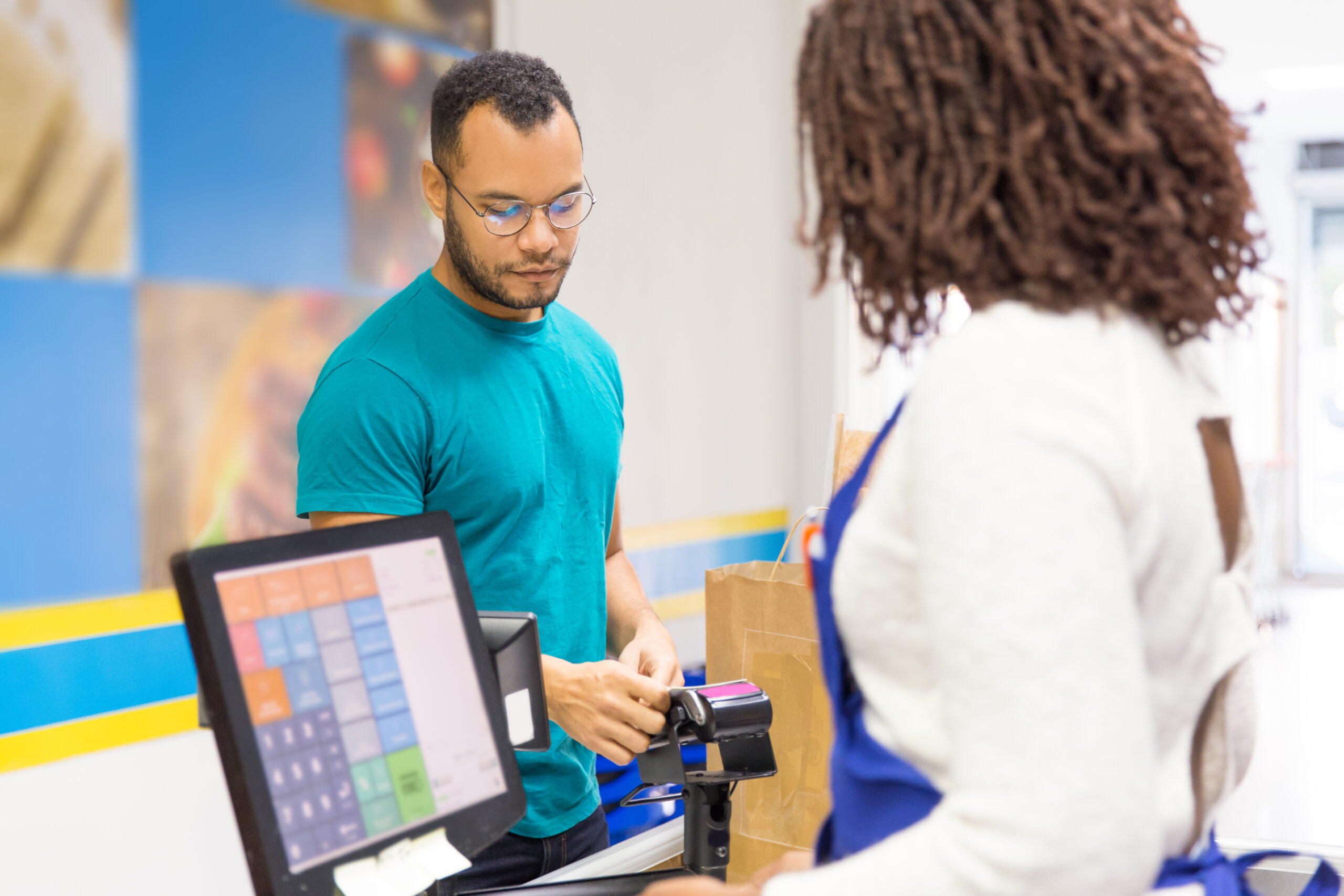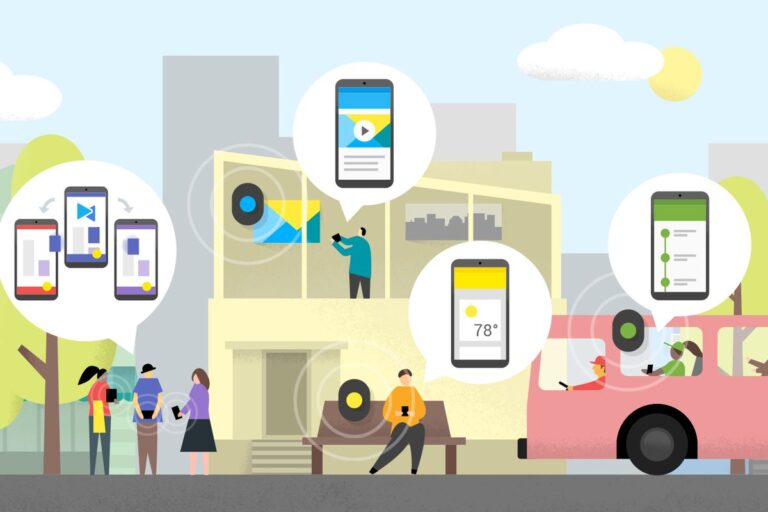Today’s shoppers have a habit of switching between online and in-store as they please, demanding flexible fulfillment (fast delivery, same-day pickup, etc.). The U.S. BOPIS market (Buy Online, Pickup In Store) is projected to surpass $154B by 2025 (Statista), and nearly two-thirds of American shoppers have used BOPIS recently.
These trends, which the pandemic somewhat accelerated, have blurred the lines between e-commerce and brick-and-mortar. And as a result, legacy inventory systems, built for separate channels, are under immense pressure.
A modern omnichannel retail POS can act as a unified fulfillment engine, integrating omnichannel inventory and intelligent sourcing to meet today’s shoppers’ expectations.
How Fulfillment Evolved from Simple to Complex
Not long ago, online and in-store sales were largely siloed. Brands treated e-commerce sites as “virtual stores,” fulfilled entirely from distribution centers (DCs), whereas physical stores managed only their own stock. Planning was straightforward.
Now, new fulfillment models have blurred that distinction. Customers can BOPIS in two ways: either having a DC ship an item to the store for pickup, or taking it directly from store shelves. Likewise, many online orders may ship from a nearby store’s inventory for speed.
These omnichannel journeys are now the norm, and shopper expectations for rapid delivery and endless product choice have skyrocketed. And it is pretty evident that traditional, fragmented inventory systems are struggling to keep up with these “anywhere” shopping experiences.
5 Common Fulfillment Issues Crushing Retail Margins
The complexity of omnichannel fulfillment can crush margins and frustrate customers unless retailers modernize their systems. They face a growing list of operational headaches eating into profits:
- Inaccurate Omnichannel Inventory
Many merchants still use ad-hoc, legacy systems for multi-channel stock data, which creates blind spots. These hurriedly-built, stopgap solutions lack the tools required to handle high-order volumes. The result is frequent stockouts or oversells.
- Inefficient Order Sourcing
Without real-time, enterprise-wide inventory visibility, matching each order to the best fulfillment location is difficult. Stores may sit on excess stock while nearby customers wait, simply because the system cannot automatically route the order to the nearby surplus.
Such inefficiency raises costs (e.g., expedited shipping or markdowns) and delays fulfillment.
- Execution-Planning Disconnect
When a store fulfills online orders, planning systems end up recording the sale only at that location. They rarely close the loop between execution and planning, which leads to planning mistakes, such as misinterpreting inventory movement as real demand.
Let’s say a store moved 100 excess units online. Planning then assumed the demand was local, so it reordered 100 units again, repeating the chronic overstock problem.
- Returns and Reverse Logistics
Returns are a big headache. Simply sending all returns back to a central DC results in wastage, since customers or stores in high-demand areas wait unnecessarily. Stores are not automatically replenished from returns, so inventory value is tied up or lost.
- Scalability and Responsiveness Gaps
These problems only multiply as sales grow. As mentioned earlier, home-grown or point solutions cannot scale to the volume or frequency of omnichannel orders. Outdated technology means limited automation and slow response to stockouts.
💡 DID YOU KNOW? 💡 IHL Research Group finds that unoptimized omnichannel fulfillment can erode profit margins significantly, on the order of 3-8% lower margins than in-store sales. |
5 Ways Omnichannel Retail POS Transforms Fulfillment
A modern omnichannel retail POS is the hub that ties together channels, inventory, and orders. Integrated with order management and inventory systems, it delivers:
- Real-Time Inventory Visibility
The point of sale system provides every channel with an up-to-the-minute view of stock. Whether a customer shops online, in a mobile app, or at a store, the POS will show the same accurate product availability. So no more oversells or stockout surprises.
- Intelligent Order Routing
When an order comes in, the system automatically finds the optimal fulfillment point. Integrated with an OMS, the point of sale can route orders to the closest store with inventory, or to a DC if that’s faster.
For example, one retailer might initially plan to ship a Phoenix order from Chicago, but if stock is lacking, the system instantly reroutes the order to a nearby Las Vegas store instead.
- Closed-Loop Planning and Execution
Crucially, a true omnichannel retail POS feeds fulfillment data back into planning. Every sale or pick is logged with its customer location, so planners know where real demand originates.
Future replenishment can then be adjusted to move more inventory to high-demand areas, preventing overstocks and making fast fulfillment more sustainable.
- Efficient Returns Handling
The POS streamlines reverse logistics. Returned items can be inspected and dispositioned on arrival (for instance, routed immediately to stores that need them). Flagging returns early allows retailers to replenish hot-selling items with that stock rather than letting items sit unused.
- Better In-Store Fulfillment
Store associates can see precise pick lists and manage in-store pick/pack/ship workflows directly from the store floor. The system triggers audible/visual alerts if BOPIS orders or same-day shipments are falling behind. This keeps order-prep on schedule, ensuring every piece of inventory works its hardest for your business.
Veras OmniView: Your Omnichannel Inventory Management Solution for Successful Fulfillment
Reaping the benefits of a modern omnichannel retail POS requires dedicated solutions for inventory management. OmniView, a cutting-edge omnichannel inventory management software by Veras Retail, unifies all the above capabilities retailers need to transform fulfillment from a fragmented cost center into a responsive, data-driven process.
Veras OmniView provides real-time, enterprise-wide inventory visibility, down to the specific physical location, from the sales floor to a backroom bin. Associates instantly see if an item is available anywhere in the network, so they can confidently execute BOPIS and Ship-from-Store orders.
OmniView also optimizes putaway and order picking, meaning any store can serve as a mini-fulfillment center. It even intelligently detects low stock levels on the floor via real-time POS integration, prompting instant replenishment from the backroom or transfers between locations.
In short, Veras OmniView ties digital and physical channels together. By connecting our point-of-sale solution with real-time inventory and fulfillment intelligence, retailers can confidently promise fast, accurate deliveries and pickups across all channels. The payoff is a future-ready fulfillment network and the loyal customers it earns.
Frequently Asked Questions (FAQs)
1. How does a centralized omnichannel retail POS help in managing product returns from online orders?
A centralized omnichannel retail POS provides a single system to process returns from any channel. This streamlines the return-to-inventory workflow. It ensures that returned products are rapidly added back to available omnichannel inventory. Thus, waste is minimized and efficiency is improved!
2. What is the typical ROI for a retailer who invests in omnichannel inventory management for improved fulfillment?
ROI is generated through reduced lost sales, lower shipping costs, and minimized inventory write-offs from overstocking. The improved customer experience and higher retention rates will also speak for themselves.
3. How does Veras OmniView handle seasonal spikes and peak periods?
Dynamic order routing, temporary fulfillment nodes (pop-up pick/pack), prioritized pick lists, and workforce scheduling help scale throughput during peaks without breaking service levels.
4. Can mid-size chains get the same benefits as large retailers from Veras Retail’s solutions?
Absolutely. Our lightweight, API-first omnichannel retail solutions are designed to scale, enabling mid-size retailers to gain speed-to-market and improve fulfillment, all without incurring massive overhead.




